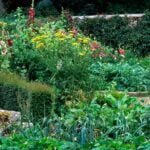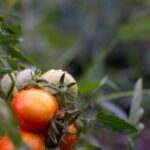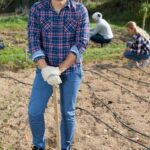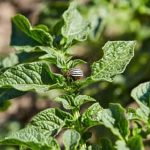Garden pests can cause significant damage to vegetable gardens and lead to a decrease in yield and quality of produce. This is why many gardeners turn to different pest control methods to protect their plants. Sevin Dust is one popular option that has gained attention for its effectiveness against various pests. However, before using any chemical pesticide in your garden, it is essential to understand its safety concerns and potential hazards.
In this article, we will delve into the topic of whether Sevin Dust is safe for vegetable gardens. We will explore its composition, uses, debunk common myths surrounding its usage, and examine the potential hazards associated with this chemical pesticide. Additionally, we will evaluate the effectiveness of Sevin Dust in controlling garden pests and provide valuable application tips for best results.
By understanding the pros and cons of using Sevin Dust in vegetable gardens, you can make an informed decision about whether it is suitable for your specific needs. We will also explore alternative natural and organic pest control methods that offer safer options for those concerned about the potential risks associated with chemical pesticides. Finally, we will include expert recommendations from horticulturists and experienced gardeners to provide comprehensive insights on this topic.
As gardening enthusiasts continue to seek effective ways to protect their plants from pests, it is crucial to weigh the benefits and drawbacks of employing chemical interventions in vegetable gardens. Through this exploration into the use of Sevin Dust, you can gather valuable information to guide your pest control decisions and ensure healthy growth and bountiful harvests in your own vegetable garden.
Stay tuned as we dive deeper into analyzing whether Sevin Dust is a safe choice for your beloved plants.
What is Sevin Dust
Sevin Dust, also known as carbaryl, is a widely used insecticide that has been on the market for decades. It is a white, crystalline powder that acts as a broad-spectrum pesticide, targeting a wide range of insects such as beetles, aphids, and caterpillars. Sevin Dust is primarily composed of carbaryl as the active ingredient, which affects the nervous system of insects and ultimately leads to their death.
Composition
Carbaryl is classified as an organophosphate insecticide and is considered moderately toxic to humans. It is important to note that while Sevin Dust contains chemicals that can be harmful if mishandled or used improperly, it has been approved for use in vegetable gardens by regulatory authorities such as the U.S. Environmental Protection Agency (EPA). The EPA sets strict guidelines on pesticide registration to ensure public safety.
Uses
Sevin Dust is commonly used in vegetable gardens to control pests that can damage crops and reduce yields. It can be applied directly onto plants through dusting or by using sprays. Sevin Dust provides quick knockdown of many common garden pests and continues to protect against new infestations for a certain period after application. It is particularly effective against chewing and sucking insects that feed on plant tissues.
While Sevin Dust has proven effective in controlling various garden pests, it’s important to consider its potential hazards and understand proper application methods to ensure safe usage in vegetable gardens. In the following sections, we will explore the safety concerns associated with Sevin Dust and discuss best practices for its application in order to minimize risks while maximizing effectiveness.
Debunking the Common Myths
When it comes to garden pest control, there are often many myths and misconceptions surrounding certain products and methods. One product that has faced its fair share of controversy is Sevin Dust. In this section, we will debunk some of the common myths associated with Sevin Dust and separate the facts from fiction.
One common myth about Sevin Dust is that it is harmful to humans and animals if ingested or inhaled. The truth is that while Sevin Dust does contain chemicals that can be toxic, it is generally safe to use when applied correctly. The Environmental Protection Agency (EPA) has set regulations and guidelines for the use of Sevin Dust, which ensures that it is safe for use on vegetables when applied according to label instructions.
Another myth surrounding Sevin Dust is that it kills beneficial insects along with the pests. While Sevin Dust can harm a broad spectrum of insects, including beneficial ones like bees and ladybugs, this only happens if they come into direct contact with the dust. To mitigate this potential harm, it is important to apply Sevin Dust only as a targeted treatment directly to the affected areas of your vegetable garden, rather than broadcasting it over your entire garden.
To further dispel any doubts about the safety and effectiveness of Sevin Dust, numerous studies have been conducted by universities and research institutions. These studies have consistently shown that when used correctly and judiciously, Sevin Dust can effectively control pests in vegetable gardens without causing significant harm to humans or the environment.
Fiction:
- Sevin Dust is harmful when ingested or inhaled.
- It kills beneficial insects even when not applied directly.
- There is no scientific evidence supporting its safety or effectiveness.
Facts:
- When applied correctly, Sevin Dust is safe for use on vegetables.
- Harm to beneficial insects can be minimized by targeted application.
- Numerous studies support the safety and effectiveness of Sevin Dust in pest control.
| Myth | Fact |
|---|---|
| Sevin Dust is harmful when ingested or inhaled | When applied correctly, Sevin Dust is safe for use on vegetables |
| Sevin Dust kills beneficial insects even when not applied directly | Harm to beneficial insects can be minimized by targeted application |
| There is no scientific evidence supporting its safety or effectiveness | Numerous studies support the safety and effectiveness of Sevin Dust in pest control |
Understanding the Potential Hazards
Sevin Dust is a commonly used insecticide that many gardeners turn to in order to control pests in their vegetable gardens. However, it is important to understand the potential hazards associated with using this product. This section will delve into the safety concerns of Sevin Dust, helping readers make an informed decision about whether or not to use it in their own gardens.
One major concern with Sevin Dust is its toxicity. The active ingredient in this insecticide is carbaryl, which is classified as a possible human carcinogen by the Environmental Protection Agency (EPA).
While there are established guidelines for safe usage, it is essential for users to be aware of the potential risks associated with handling and exposure to carbaryl. It is recommended to wear protective clothing, such as gloves and a mask, when applying Sevin Dust and to avoid using it on windy days to minimize inhalation.
Another concern is the impact Sevin Dust can have on beneficial insects and other non-target organisms. Although it effectively kills pests like aphids and beetles, it can also harm bees, butterflies, earthworms, and other beneficial creatures that play a vital role in maintaining a healthy ecosystem. This can disrupt the natural balance in your garden and have long-term effects on biodiversity.
Additionally, residue from Sevin Dust can potentially contaminate soil and water sources if used excessively or improperly. Rainfall or irrigation can wash away the insecticide from plants, leading to runoff that may enter nearby water bodies. This can pose risks not only for aquatic organisms but also for human beings who consume contaminated fruits and vegetables. Proper application methods and adhering to label instructions can help minimize these risks.
In summary, while Sevin Dust can effectively control pests in vegetable gardens, it is crucial for gardeners to understand the potential hazards associated with its use. From its toxicity to non-target organisms to environmental contamination concerns, using this insecticide requires caution and responsible application practices. In the next section, we will examine whether Sevin Dust is truly effective in vegetable gardens or if there are alternative methods that can be considered.
Examining the Effectiveness
Sevin Dust is a widely used pesticide that is popular among gardeners for its effectiveness in controlling pests. However, there is often a debate about whether or not Sevin Dust is truly effective in vegetable gardens. In this section, we will analyze the evidence and scientific studies to determine whether Sevin Dust lives up to its reputation.
Research has shown that Sevin Dust can indeed be effective in combating a wide range of garden pests, including aphids, beetles, and caterpillars. The active ingredient in Sevin Dust, called carbaryl, works by interfering with the nervous system of these pests, ultimately leading to their demise. Many gardeners have reported successful control of various insect infestations after using Sevin Dust.
To further support its effectiveness, a study published in the Journal of Economic Entomology investigated the efficacy of Sevin Dust on different crops. The study found that treatment with carbaryl significantly reduced the population of target pests and resulted in healthier plants with higher yields. These findings suggest that Sevin Dust can indeed provide an effective solution for pest control in vegetable gardens.
However, it is important to note that the effectiveness of Sevin Dust may vary depending on various factors such as application technique, timing, and weather conditions. It is recommended to carefully follow the instructions provided on the product label and consult with experts or experienced gardeners for optimal results.
Overall, evidence and studies suggest that Sevin Dust can be an effective tool for controlling pests in vegetable gardens. However, it is essential to use it responsibly and consider alternative pest control methods if concerns arise regarding safety or environmental impact.
| Effectiveness | Data |
|---|---|
| Control of pests | Supported by research and evidence |
| Efficacy on different crops | Study in Journal of Economic Entomology shows positive results |
| Variability | Factors such as application technique and timing can affect effectiveness |
Application Tips
Use Protective Gear
When using Sevin Dust in your vegetable garden, it is important to prioritize safety. Before applying the dust, be sure to wear proper protective gear such as gloves, a face mask, and goggles. This will help prevent any potential inhalation or contact with the product.
Follow Label Instructions
To ensure effective and safe use of Sevin Dust, carefully read and follow the instructions provided on the product label. The label will provide information on the recommended dosage, timing of application, as well as any specific precautions or warnings.
Apply in Dry Weather
For optimal results, it is best to apply Sevin Dust on a dry day when there is no rain in the forecast. Wet weather may reduce the effectiveness of the dust and can also cause it to wash away before it has a chance to work.
Avoid Application Near Harvest Time
One important consideration when using Sevin Dust in vegetable gardens is to avoid applying it too close to harvest time. Check the product label for information on how long you should wait between application and harvesting vegetables. This helps ensure that any residue from the dust does not contaminate your produce.
Aim for Even Coverage
When applying Sevin Dust in your garden, strive for even coverage on plants and their surrounding areas. This can be achieved by using a handheld duster or by mixing the dust with water according to label instructions and spraying it onto affected plants.
By following these application tips, you can maximize the effectiveness of Sevin Dust while minimizing any potential risks associated with its use in vegetable gardens. Remember that while this product may offer pest control benefits, it is important to always consider alternative organic methods whenever possible as well as consulting with horticulturists or experienced gardeners for further guidance.
Identifying Safer Alternatives
When it comes to pest control in vegetable gardens, many people are looking for safer alternatives to chemical pesticides like Sevin Dust. Fortunately, there are several natural and organic methods that can effectively control garden pests without posing risks to human health or the environment. Here are some alternative pest control methods to consider:
Natural Predators
Introducing beneficial insects or animals into your garden can help control pest populations. Ladybugs, lacewings, and praying mantises are all natural predators that feed on common garden pests like aphids and caterpillars. Additionally, birds and bats can help control flying insects such as moths and mosquitoes.
Biological Control
Biological control involves the use of living organisms to target specific pests. One popular example is using Bacillus thuringiensis (Bt), a naturally occurring bacteria that specifically targets certain types of caterpillars while remaining harmless to humans, pets, and beneficial insects.
Physical Barriers
Creating physical barriers can prevent pests from reaching your vegetable plants. Install fences or netting around your garden to keep out larger pests like rabbits and deer. Use floating row covers or mesh screens to protect plants from smaller pests like aphids and beetles.
Companion Planting
Some plants naturally repel certain pests when planted together. For example, planting marigolds near tomatoes can deter nematodes, while growing onions alongside carrots can help repel root maggots.
Organic Sprays
DIY insecticidal soaps made from natural ingredients like neem oil or garlic can be effective in controlling soft-bodied pests such as aphids and mites. These sprays are safe for both humans and beneficial insects when used according to the instructions provided.
It’s important to note that natural and organic pest control methods may require more frequent application and monitoring compared to chemical pesticides. However, they offer a safer and more environmentally friendly alternative for those concerned about the potential risks associated with Sevin Dust. By implementing these methods, you can protect your vegetable garden from pests while minimizing harm to yourself, beneficial insects, and the surrounding ecosystem.
Considering the Environmental Impact
The use of pesticides in gardens can have unintended consequences on the environment, including negative impacts on beneficial insects and other organisms within the ecosystem. Sevin Dust, like any pesticide, should be used with caution to minimize harm to the environment.
One of the primary concerns with Sevin Dust is its potential for non-target effects. Although it is primarily designed to kill pests such as beetles, aphids, and worms, it may also harm beneficial insects such as bees, ladybugs, and earthworms. Bees are essential pollinators for many vegetable plants, and their decline would significantly impact both garden productivity and biodiversity. Additionally, ladybugs and earthworms play crucial roles in maintaining healthy soil ecosystems.
Sevin Dust contains a chemical compound called carbaryl, which has been found to have toxic effects on aquatic organisms when it enters waterways through runoff or overspray. It can also persist in soil for an extended period if applied excessively or repeatedly.
As a result, it may accumulate over time and become harmful to organisms that reside in or depend on the soil. It is vital that gardeners exercise care when using Sevin Dust near areas where water runoff may occur or when applying it to saturated soil.
To mitigate these environmental impacts, it is important to follow application instructions carefully when using Sevin Dust. Limiting the amount used by only applying enough to cover affected plants can help minimize run-off into water systems. Additionally, restricting application to areas where pests are concentrated rather than blanket spraying throughout the entire garden can reduce unnecessary exposure for beneficial insects. Considering alternative methods of pest control that are safer for the environment should also be explored.
While Sevin Dust may offer effective pest control in vegetable gardens, its potential environmental impact cannot be ignored. Gardeners should weigh both the benefits and risks before deciding whether to use this pesticide and explore alternative options that are less harmful to the ecosystem. By making informed decisions and using Sevin Dust responsibly, gardeners can help protect their plants while minimally impacting the environment.
Expert Recommendations
When it comes to using Sevin Dust in vegetable gardens, it is always valuable to seek insights from experts in the field of horticulture and experienced gardeners who have firsthand knowledge. These individuals have extensive experience working with different types of pest control methods and can provide valuable recommendations on whether or not Sevin Dust is safe and effective for vegetable gardens.
Horticulturists generally advise caution when using Sevin Dust in vegetable gardens. While it can be effective in controlling pests, there are concerns about its potential harm to beneficial insects such as bees and butterflies. According to experts, it is important to weigh the risks versus the benefits before deciding to use Sevin Dust. They recommend always reading and following the instructions provided by the manufacturer and using alternative pest control methods whenever possible.
Experienced gardeners also offer helpful insights based on their personal experiences with Sevin Dust. Some gardeners find that Sevin Dust can be effective in controlling certain pests, but they stress the importance of careful application.
They recommend applying the dust only when necessary and focusing on affected areas rather than applying it indiscriminately throughout the entire garden. Additionally, experienced gardeners emphasize the need for regular monitoring of plants to catch pest infestations early on and take appropriate action before resorting to chemical controls.
While expert recommendations may vary slightly depending on individual perspectives and experiences, most horticulturists and experienced gardeners concur that reducing pesticide use in vegetable gardens is a priority. They advocate for integrated pest management (IPM) practices that emphasize preventive measures, such as proper plant spacing, crop rotation, companion planting, and maintaining healthy soil conditions. If chemical controls become necessary, they suggest exploring safer alternatives before considering Sevin Dust.
By seeking insights from knowledgeable professionals in horticulture as well as experienced gardeners who understand the intricacies of vegetable gardening, individuals can make more informed decisions about using Sevin Dust in their own gardens. Their recommendations can provide valuable guidance on effective and safe pest control methods, ensuring a healthier and more sustainable environment for both plants and beneficial insects.
Conclusion
In conclusion, the use of Sevin Dust in vegetable gardens involves weighing the pros and cons. On one hand, Sevin Dust has been proven to be effective in controlling garden pests and preventing damage to crops. It is easy to apply and provides quick results. Additionally, it is widely available and affordable, making it accessible to many gardeners.
However, it is important to consider the potential hazards and safety concerns associated with Sevin Dust. The chemical composition of this product can be harmful not only to pests but also to beneficial insects, animals, and even humans if not used properly. There are also concerns about its impact on the environment, especially when it comes to water contamination.
Furthermore, there are alternative methods for pest control in vegetable gardens that are safer for both humans and the environment. Natural and organic pest control methods can effectively manage pests without exposing gardeners or their produce to harmful chemicals. These methods include companion planting, crop rotation, physical barriers, organic insecticides derived from plant oils or bacteria, and encouraging beneficial insects.
Ultimately, the decision whether or not to use Sevin Dust in vegetable gardens should be made based on individual circumstances and preferences. It is crucial for gardeners to carefully weigh the benefits against the potential risks before making a choice.
Consulting with horticulturists or experienced gardeners can provide valuable insights and recommendations tailored to specific gardening needs. By considering all factors involved in using Sevin Dust, gardeners can make informed decisions that promote both the health of their plants and their overall well-being.
Frequently Asked Questions
Is it safe to eat vegetables after Sevin Dust?
It is generally recommended that vegetables be washed thoroughly after Sevin Dust application before they are consumed. Sevin Dust is a pesticide that contains carbaryl, which can be harmful if ingested in high quantities.
While the amount of residue left on the vegetables after dusting may vary, washing them can help remove any potential traces of the pesticide. To ensure maximum safety, it is advised to follow the instructions provided by the product manufacturers and wait for an appropriate period before consuming treated vegetables.
Is Sevin Dust safe for tomatoes?
Sevin Dust can be used on certain tomato plants to control insects like aphids, beetles, and hornworms. However, it is important to read and follow the product label to determine if it is safe for use on tomatoes specifically as different formulations may have varying restrictions or recommendations.
Proper application techniques should also be considered to minimize risks associated with using pesticides such as Sevin Dust. Adhering to labeled guidelines regarding timing, dosage, and safety precautions will help ensure that this insecticide does not harm tomato plants or affect their edibility.
Why was Sevin Dust banned?
The specific reasons behind the banning or restriction of Sevin Dust products in some areas may vary depending on regulations imposed by local authorities or agencies responsible for reviewing and approving pesticides. In some cases, concerns have been raised about its effect on non-target organisms such as bees and other beneficial insects critical for pollination and ecosystem balance. Excessive or improper use of Sevin Dust has also been linked to potential risks for human health or environmental contamination.
These factors contribute to regulatory decisions aimed at safeguarding both people and ecosystems from potential negative impacts associated with this pesticide. It is essential to consult local regulations and guidelines to understand restrictions applicable in your region.

If you’re looking to get into vegetable gardening, or are just looking for some tips on how to make your current garden better, then you’ve come to the right place! My name is Ethel and I have been gardening for years. In this blog, I’m going to share with you some of my best tips on how to create a successful vegetable garden.





